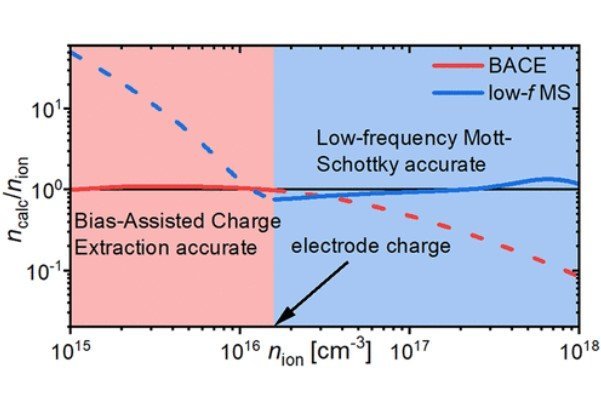Determination of Mobile Ion Densities in Halide Perovskites via Low-Frequency Capacitance and Charge Extraction Techniques
Jonas Diekmann, Francisco Peña-Camargo, Nurlan Tokmoldin, Jarla Thiesbrummel, Jonathan Warby, Emilio Gutierrez-Partida, Sahil Shah, Dieter Neher, and Martin Stolterfoht
The Journal of Physical Chemistry Letters 2023 14 (18), 4200-4210
DOI: 10.1021/acs.jpclett.3c00530
This scientific article discusses the impact of mobile ions on perovskite photovoltaic devices and the challenges in accurately quantifying mobile ion densities. The study evaluates several experimental methodologies, including charge extraction by linearly increasing voltage (CELIV) and bias-assisted charge extraction (BACE), as well as frequency-dependent capacitance measurements.
The findings show that CELIV underestimates ion density and is not suitable for accurate quantification. BACE, on the other hand, can accurately reproduce ion density as long as it is lower than the electrode charge. The study also demonstrates that low-frequency Mott-Schottky analysis can provide accurate ion density values for high excess ionic densities typical of perovskites. Overall, the methods presented in this study enable accurate tracking of ionic densities in perovskite devices and a deeper understanding of ionic losses and device aging.
How was Setfos Used?
SETFOS was used in this work to simulate the impact of mobile ions on the performance of perovskite solar cells. The parameters related to mobile ions were implemented in the drift-diffusion module of Setfos. This allowed the researchers to include mobile ions in their simulations and recreate the observed JV-hysteresis in the cells over a wide range of scan speeds. The simulations also verified that losses in the performance characteristics of JSC, VOC, and FF could be recreated

